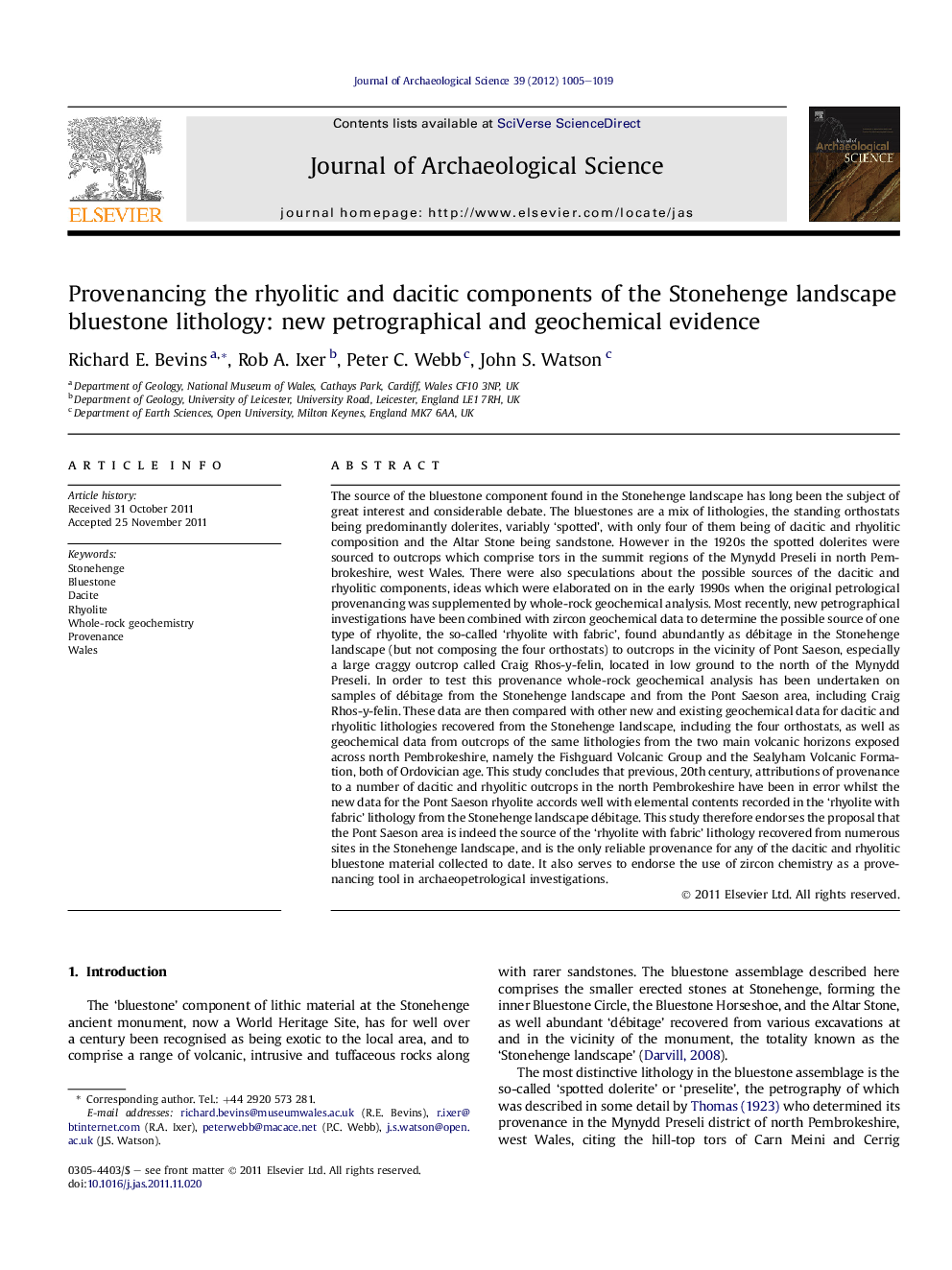| Article ID | Journal | Published Year | Pages | File Type |
|---|---|---|---|---|
| 1035592 | Journal of Archaeological Science | 2012 | 15 Pages |
The source of the bluestone component found in the Stonehenge landscape has long been the subject of great interest and considerable debate. The bluestones are a mix of lithologies, the standing orthostats being predominantly dolerites, variably ‘spotted’, with only four of them being of dacitic and rhyolitic composition and the Altar Stone being sandstone. However in the 1920s the spotted dolerites were sourced to outcrops which comprise tors in the summit regions of the Mynydd Preseli in north Pembrokeshire, west Wales. There were also speculations about the possible sources of the dacitic and rhyolitic components, ideas which were elaborated on in the early 1990s when the original petrological provenancing was supplemented by whole-rock geochemical analysis. Most recently, new petrographical investigations have been combined with zircon geochemical data to determine the possible source of one type of rhyolite, the so-called ‘rhyolite with fabric’, found abundantly as débitage in the Stonehenge landscape (but not composing the four orthostats) to outcrops in the vicinity of Pont Saeson, especially a large craggy outcrop called Craig Rhos-y-felin, located in low ground to the north of the Mynydd Preseli. In order to test this provenance whole-rock geochemical analysis has been undertaken on samples of débitage from the Stonehenge landscape and from the Pont Saeson area, including Craig Rhos-y-felin. These data are then compared with other new and existing geochemical data for dacitic and rhyolitic lithologies recovered from the Stonehenge landscape, including the four orthostats, as well as geochemical data from outcrops of the same lithologies from the two main volcanic horizons exposed across north Pembrokeshire, namely the Fishguard Volcanic Group and the Sealyham Volcanic Formation, both of Ordovician age. This study concludes that previous, 20th century, attributions of provenance to a number of dacitic and rhyolitic outcrops in the north Pembrokeshire have been in error whilst the new data for the Pont Saeson rhyolite accords well with elemental contents recorded in the ‘rhyolite with fabric’ lithology from the Stonehenge landscape débitage. This study therefore endorses the proposal that the Pont Saeson area is indeed the source of the ‘rhyolite with fabric’ lithology recovered from numerous sites in the Stonehenge landscape, and is the only reliable provenance for any of the dacitic and rhyolitic bluestone material collected to date. It also serves to endorse the use of zircon chemistry as a provenancing tool in archaeopetrological investigations.
